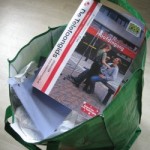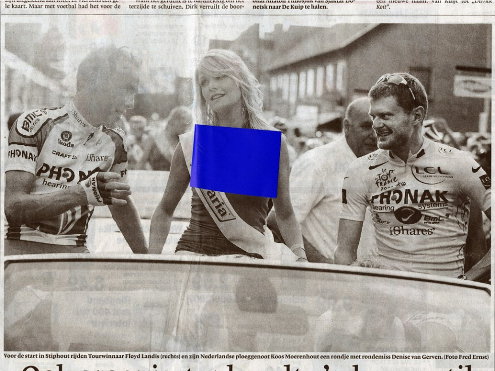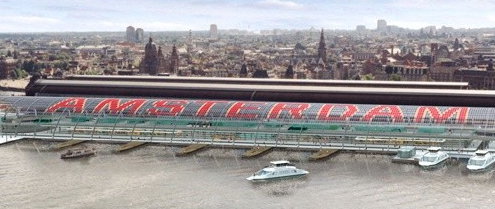 De Telefoongids to fire hundreds of employees
De Telefoongids to fire hundreds of employees
The phone book company that is trying to silence Alexander Klöpping is planning to fire 30% of its 800 employees, Z24 reports.
According to European Directories, the ‘restructuring’ is necessary for a print-to-online transition. The company has also declared that it plans to continue distribution of its paper phone book, despite opposition of Dutch parliament, amongst others.
Klöpping had registered the domain sterftelefoongidssterf.nl (‘die, phone book, die’), which he redirected to the presumed cancellation page of the phone book.
Famous croquette to disappear from supermarket shelves because of anti-monopoly rules
Snack producer Royaan can no longer use its famous brand Van Dobben in supermarkets if it wants to continue its merger with Ad van Geloven (of amongst other the Mora brand).
The Dutch anti-monopoly agency NMa has determined that Royaan must license the brand for supermarket use to another manufacturer during a period of six years according to NOS. After that the brand must be discontinued. The brand may still be used in snack bars; according to NMa there are still enough players in that market to keep it healthy. The intended merger of the snack giants was announced in November 2011.
Krokets or croquettes are a Dutch snack that consists of ragout deep-fried in a breadcrumb jacket.
Experiment with dental free market must be stopped
A recent, nationwide experiment in which dentists could determine their own rates must be stopped the court in The Hague said last Wednesday.
According to Z24, dentists’ rates had risen 6% since the start of the experiment. When Dutch parliament indicated in July it wanted to have the experiment stopped, the association for dentists sued the caretaker minister for public health, but lost. The experiment started in January of this year and was to run for three years.



 A two-metre-tall wooden penis was found to be insulting by a judge in Breda last Wednesday. Artist Peter de Koning of Steenbergen in Noord Brabant had made the statue to protest the way a police officer had treated his daughter. The officer had allegedly groped the girl from his car under the pretext of searching for marijuana late last year.
A two-metre-tall wooden penis was found to be insulting by a judge in Breda last Wednesday. Artist Peter de Koning of Steenbergen in Noord Brabant had made the statue to protest the way a police officer had treated his daughter. The officer had allegedly groped the girl from his car under the pretext of searching for marijuana late last year.
 Meet Hector, a robot developed by Dutch company Smart Homes (with the help of a lot of partners across Europe). His task is to help dementia sufferers around the home, and as a result help them be able to live at home longer.
Meet Hector, a robot developed by Dutch company Smart Homes (with the help of a lot of partners across Europe). His task is to help dementia sufferers around the home, and as a result help them be able to live at home longer. Two weeks ago a man from De Meern near Utrecht was found dead in the crawlspace of his neighbour’s house.
Two weeks ago a man from De Meern near Utrecht was found dead in the crawlspace of his neighbour’s house. This cute video by filmersblog.nl shows Dutch people aged 1 – 100 tell their age.
This cute video by filmersblog.nl shows Dutch people aged 1 – 100 tell their age.  De Telefoongids to fire hundreds of employees
De Telefoongids to fire hundreds of employees
 Consumer watchdog Consumentenbond has compared two types of broadband Internet in the latest issue of its magazine Digitaalgids, and concluded that cable and fibre optic are equals.
Consumer watchdog Consumentenbond has compared two types of broadband Internet in the latest issue of its magazine Digitaalgids, and concluded that cable and fibre optic are equals.